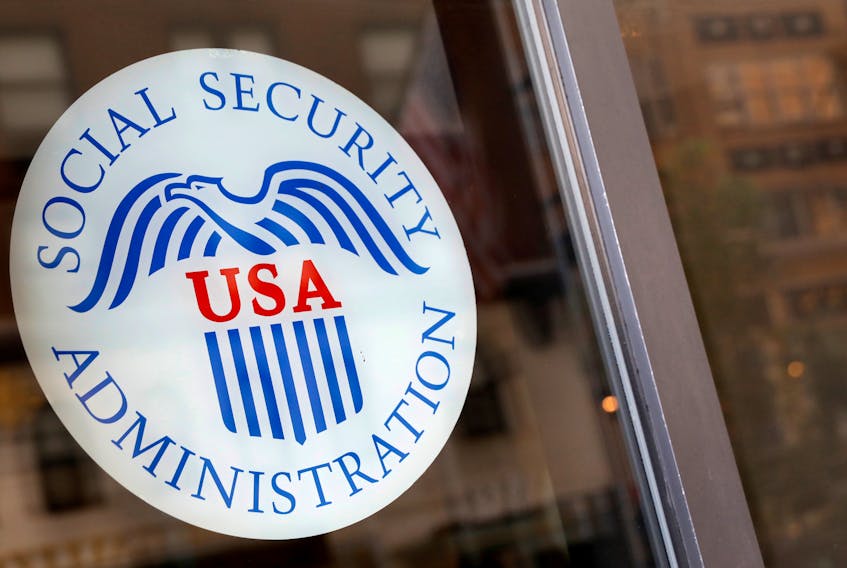By Mark Miller
CHICAGO (Reuters) - (The opinions expressed here are those of the author, a columnist for Reuters.)
It is one of the most important retirement documents you will ever receive - but fewer Americans are reviewing their Social Security benefit statement nowadays due to cost-cutting and a government push to online services that is falling short.
Until about a decade ago, all workers eligible for Social Security received a paper statement in the mail that provided useful projections of their benefits at various ages, along with reminders on the availability of disability benefits and Medicare enrollment information.
But the Social Security Administration (SSA) decided in 2010 to save money by eliminating most mailings of benefit statements. Instead, we would all be encouraged to obtain this information online.
It is now abundantly clear that this is not working out.
The number of workers accessing their statements online has been just a fraction of those who once were reached by paper statements. And the cost-benefit tradeoff is poor.
Forty-two million Americans have created online accounts with the SSA since they were first offered seven years ago, the agency says, compared with the 155 million paper statements that were mailed in 2010, before the cost-cutting began. Meanwhile, the number of online account-holders who accessed their statements fell dramatically in fiscal 2018, from 96 percent to 43 percent, according to a report issued in February by the SSA’s Office of the Inspector General (OIG).
The report does not speculate on reasons for the fall-off, and the SSA declined to offer its own analysis. “We’ll leave the hypothesizing to others,” said Mark Hinkle, acting press officer.
If you have an online account with the SSA, you will receive an email message three months before your birthday reminding you to review your statement. But the process of logging on can be challenging, partly due to security protections aimed at preventing identity theft and fraud. The security is necessary, but the setup process requires users to go through multiple layers of authentication to prove identity.
Meanwhile, the level of comfort with online technology among older people lags the general population, according to a 2017 study by the Pew Research Center. For example, 51 percent of adults aged 65 or older have home broadband, compared with 73 percent of all adults. “We’ve seen the gaps close somewhat, but for the most part the differences haven’t changed much over the past five or six years,” said Monica Anderson, a senior researcher with Pew.
BROADER SHIFT TO ONLINE CUSTOMER SERVICE
The SSA’s shift to online accounts is part of a broader agency strategy to handle most of its business with the public online by 2025. Yet the statement adoption rates underscore the problem with that strategy. Social Security is a near-universal program, and that means the agency serves many people who are less tech-savvy.
Differences in tech adoption also vary quite a bit by income, education levels and race. Eighty-seven percent of seniors living in households earning more than $75,000 annually told Pew they have home broadband, compared with just 27 percent of seniors whose annual household income is below $30,000.
But the relatively low engagement with statements also might be due to human behavior. “I logged on and set it up the first year it was offered,” said Kathleen Romig, senior policy analyst at the Center on Budget and Policy Priorities, a leading research and policy expert on Social Security.
“But do I log on regularly to check my account? Absolutely not - and I’m much more interested in Social Security than most people," she said. "But that seems deeply normal to me - people are busy and once they’ve logged on once, they don’t bother to do it again. It goes on the back burner.”
Currently, the only people receiving paper statements by mail are those who are over age 60, have not claimed benefits and do not have an online account. That was roughly 13 million people in fiscal 2017, according to the OIG report.
People who review their statements tend to make more optimal decisions claiming benefits. The statement projects your benefit at various ages - and people who review the numbers are far less likely to claim at earlier ages, and more likely to stay in the workforce longer, one recent research paper found. (https://bit.ly/2IzFZPH)
The statement also provides an opportunity to safeguard against the threat of identity theft and fraud by checking your earning history to make sure it looks accurate. “The best way to prevent fraud is for everyone to look every year at the earnings statement to see if everything looks right,” Romig said. (You can sign up for an account here: http://bit.ly/socialsecurityaccount)
How much does the agency save by shifting to online accounts? About $46 million last year, according to the OIG report. That sounds like big money, but it is not significant in the context of the SSA’s overall budget, which is $12.9 billion in fiscal 2019.
The SSA budget has been cut repeatedly over the past decade. That has led to large staff reductions and closing of field offices. Wait times for the public have soared at field offices and on the agency’s toll-free line; there also have been big backups in disability appeals hearings and back-office paperwork processing. (https://nyti.ms/2VXaNge)
For fiscal 2020, the agency has requested a budget of $13.3 billion - a 3.3 percent increase. Notably, the separate budget request from the White House for the agency was to keep the budget nearly flat.
Indeed, Romig argues that the diminished number of people receiving and reviewing Social Security statements is just part of a bigger set of problems besetting the agency. “It’s a good example of why the Social Security Administration needs more money.”
(Reporting and writing by Mark Miller in Chicago; Editing by Matthew Lewis)









